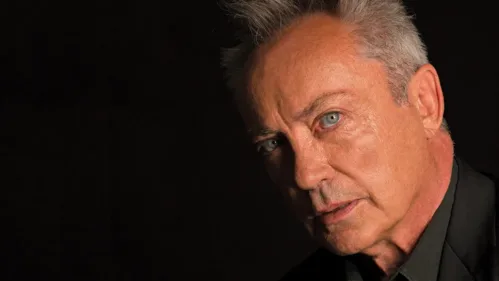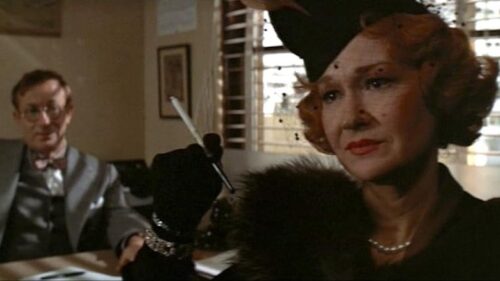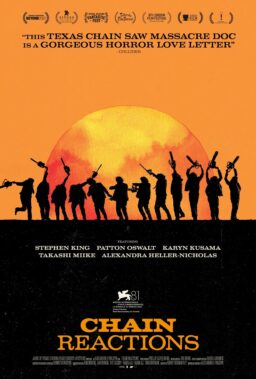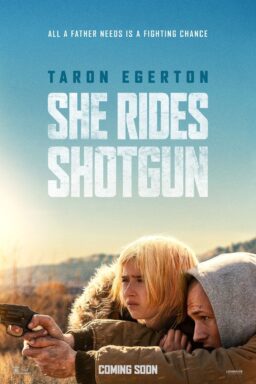Anne Rice, the novelist who wrote everything from historical novels to erotica to her enormously popular and influential “Vampire Chronicles” saga, passed away on December 11th at the age of 80 due to complications from a stroke. One of the most popular authors of her time, she sold over 150 million copies of her work. And while the critical reactions to them would vary wildly, they helped her to develop a huge fan following, especially among members of the LGBTQ+ community who saw parallels between the characters in her stories, in particular the vampire-related ones, and their own struggles. Her books also inspired interest from Hollywood, leading to several screen adaptations of varying degrees of quality.
I can recall with reasonable clarity the first time I was introduced to Rice’s work. It was 1985, I was 14 and one of the magazines that I read back then was Twilight Zone, a spinoff of the classic television show that published genre fiction as well as coverage of upcoming movies and television shows. To be honest, I tended to leave the fiction pieces to the side unless it was an author that I knew like Stephen King because I tended to be more interested in the other stuff. However, for one issue, the big cover story was an excerpt from Rice’s then-new novel The Vampire Lestat, which appeared to be something about a rock-and-roll vampire. That certainly looked intriguing and then when I noticed that the coolest girl in French class was toting around a copy, I figured it was time to check it out.
By that point, I had seen plenty of vampire-related films and read such classic books as Dracula and Salem’s Lot, but this book, in which its narrator, the vampire Lestat de Lioncourt, recounted the events of his 200-year-long life, was something wholly new and different. Unlike most stories of its type, this was one that was not only told entirely from the perspective of the vampire, but which had a certain degree of sympathy for such creatures as well. These vampires were suave, erudite, philosophical, and sexy in ways that not only confounded the norms of the day, but which inspired readers to redefine what those norms actually meant. It was a striking work of honor literature—the kind that would stick with you forever to some degree if you happened to read it at just the right time.
After finishing The Vampire Lestat, I then went back to read its predecessor, Rice’s 1976 debut novel Interview with the Vampire, a book she wrote in part to come to terms with the death of her young daughter Michelle, who would serve as the inspiration for its most tragic character, the eternally childlike vampire Claudia. This book recounted the exploit of Louis de Pointe du Lac, a plantation owner in 1791 who, in a moment of despair, allows himself to be transformed into a vampire by Lestat and the two become undead frenemies for the next couple of centuries. Intriguingly, a number of the events seen in this book by Louis would turn up in the followup from Lestat’s perspective and it was largely left up to readers to decide which account was the accurate one. Again, the prose styling could be unwieldy at times, but the results were undeniably compelling and continue to wield an enormous amount of influence on the entire vampire mythos to this day.
Although the “Vampire Chronicles” would eventually encompass over a dozen novels and become the works that she was most famous for, the prolific Rice would tackle a wide variety of subjects and genres in other novels over the years. There were historical novels like The Feast of All Saints (1979) and the castrati-based drama Cry to Heaven (1982). There were sagas about witches (The Witching Hour [1990], Lasher [1993] and Taltos [1994]) and mummies (The Mummy or Ramses the Damned [1989], Ramses the Damned: The Passion of Cleopatra [2017]) and Jesus Christ (Christ the Lord: Out of Egypt and Christ the Lord: The Road to Cana). She even surreptitiously wrote a couple of erotically-charged novels, Exit to Eden (1985) and Belinda (1986), under the name of Anne Rampling and, as A.N. Roquelaure, some full-on smut, in the best sense of the word, with a quartet of S&M-tinged novels inspired by the tale of Sleeping Beauty (The Claiming of Sleeping Beauty [1983], Beauty’s Punishment [1984], Beauty’s Release [1985] and Beauty’s Kingdom [2015]) that raised the eyebrows, among other things, of readers drawn to them via Rice’s other work. To be honest, I can’t say that I have read all of these or even liked the ones that I did read, but to cover such a wide variety of topics instead of simply churning out one vampire-related novel after another was an undeniably impressive achievement that spoke of her considerable ambitions as an author.
Even before Interview with a Vampire was published, it had been purchased by Paramount Pictures in order to be transformed into a film with Rice adapting her own book. Perhaps inevitably, the project soon landed in development hell—at one point, Rice reportedly rewrote the part of Louis for a woman in the hopes that this would make it an easier sell—and it would not be until 1993 that a film would finally go into production under the direction of Neil Jordan, his follow-up to the international hit “The Crying Game.” That decision seemed sound enough but there was a genuine uproar when it was announced that Tom Cruise would be playing the role of Lestat opposite rising stars Brad Pitt as Louis and Kirsten Dunst as Claudia. Leading the uproar was Rice herself, who publicly dismissed the casting as a star-driven mistake and suggested that Cruise and Pitt switch roles.
However, by the time the film was ready to be released in November of 1994, she had changed her tune and took out ads announcing her approval of both “Interview with the Vampire” and of Cruise’s appearance. This may sound like craven backtracking, but the truth is that Cruise was actually surprisingly effective in a role that could have easily made him look foolish but which he tackled with real intensity as well as a sly and diabolical wit. The film was further bolstered by strong performances by Pitt, Dunst and Antonio Banderas, a nicely atmospheric mood and plenty of sex and violence (the latter of which reportedly caused Oprah Winfrey to flee a preview screening before the end of the first reel) to boot. Some of the nuance of the book may have gotten a bit lost on the trip from the page to the screen but for the most part, it was a smart and respectful take on a complicated book that no doubt exposed Rice and her work to a new generation of readers.
Although “Interview with the Vampire” proved to be a major commercial hit, subsequent attempts to adapt Rice’s work would not fare nearly as well. For reasons that may never be properly explained, “Exit to Eden,” a story set at a remote BDSM-themed resort chronicling the romance between the dominatrix who manages the place and a visitor who arrives to explore his submissive side, was brought to the screen in 1994 by Garry Marshall—yes, that Garry Marshall—in a version that nixed most of the book’s central relationship between the dominatrix and the submissive (played by Dana Delany and Paul Mercurio) in order to bring in an extraneous comedic plot involving diamond thieves who are followed to the island by a couple of cops (Rosie O’Donnell and Dan Aykroyd) who are forced to go undercover as visitors to blend in. Salacious and stupid in equal measure, this remains one of the most bewildering movies that I have seen in my life and if this description has somehow roused enough curiosity to cause you to want to try to seek it out—don’t. Just trust me on this.
Although the success of “Interview with the Vampire” would have suggested that an adaptation of The Vampire Lestat would be coming soon, there would not be another film from the “Vampire Chronicles” until 2002’s “Queen of the Damned,” a film that mashed together elements from both The Vampire Lestat and her third book in the series, Queen of the Damned, much to Rice’s public displeasure. Although the subsequent film did feature a compelling performance from singer Aaliyah (who died in a plane crash several months before its release) in the title role, the result was kind of a mess that seemed more influenced by MTV than Gothic traditions. It was slammed by critics and achieved only moderate results at the box-office. And while there was talk of Rice and her son, Christopher, doing a television series based on the novels, the only other adaptation of one of the “Vampire Chronicles” came in 2006 with Lestat, a heavily hyped stage musical version with a score by Elton John and Bernie Taupin that would run for only 39 performances and go down as one of the biggest flops in Broadway history.
Of course, even the most intelligently conceived and executed adaptation of Rice’s work would have to deal with the loss of the most significant aspect of her books—her voice as a writer. Her stories ranged from the sublime to the silly but the way in which she told them—an intriguing combination of wordy self-seriousness and offbeat camp—proved popular with readers. Her championing of characters who sat outside of societal norms clearly struck a chord with readers who thought themselves to be outsiders as well, and felt that she was a writer who truly understood from where they were coming. Rice may be gone now but her legacy and influence should prove to be as long-lasting and durable as the likes of Lestat and Louis.












